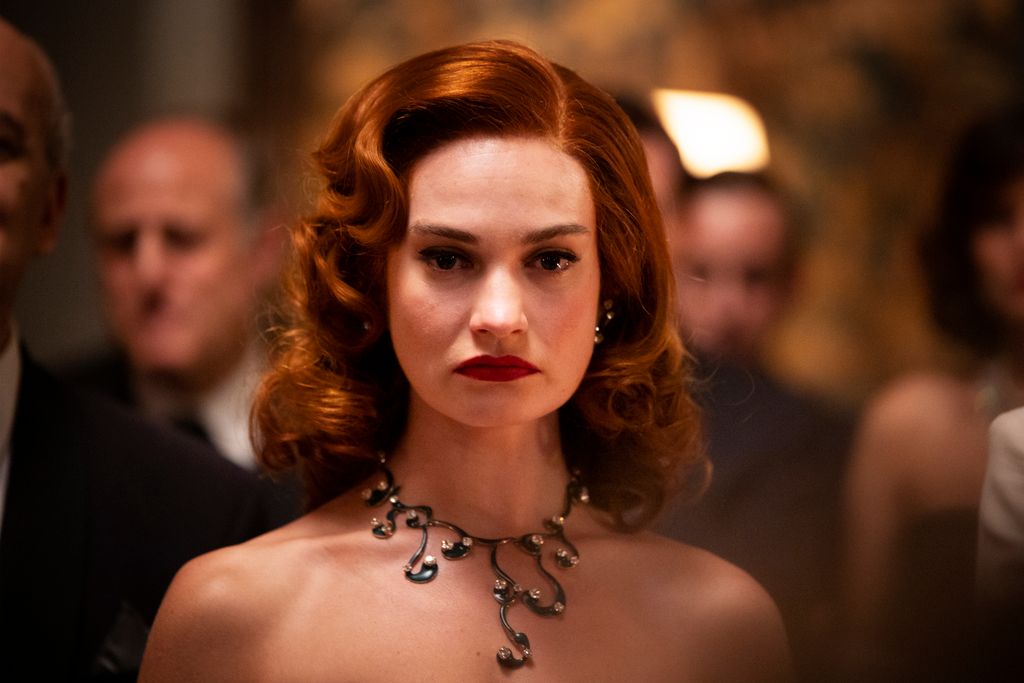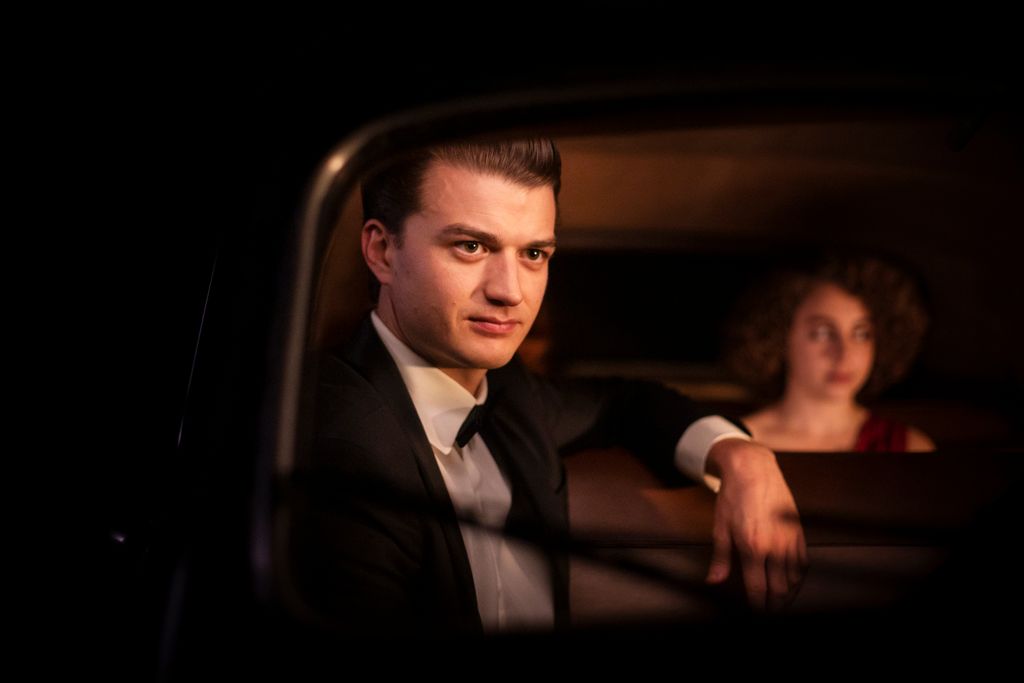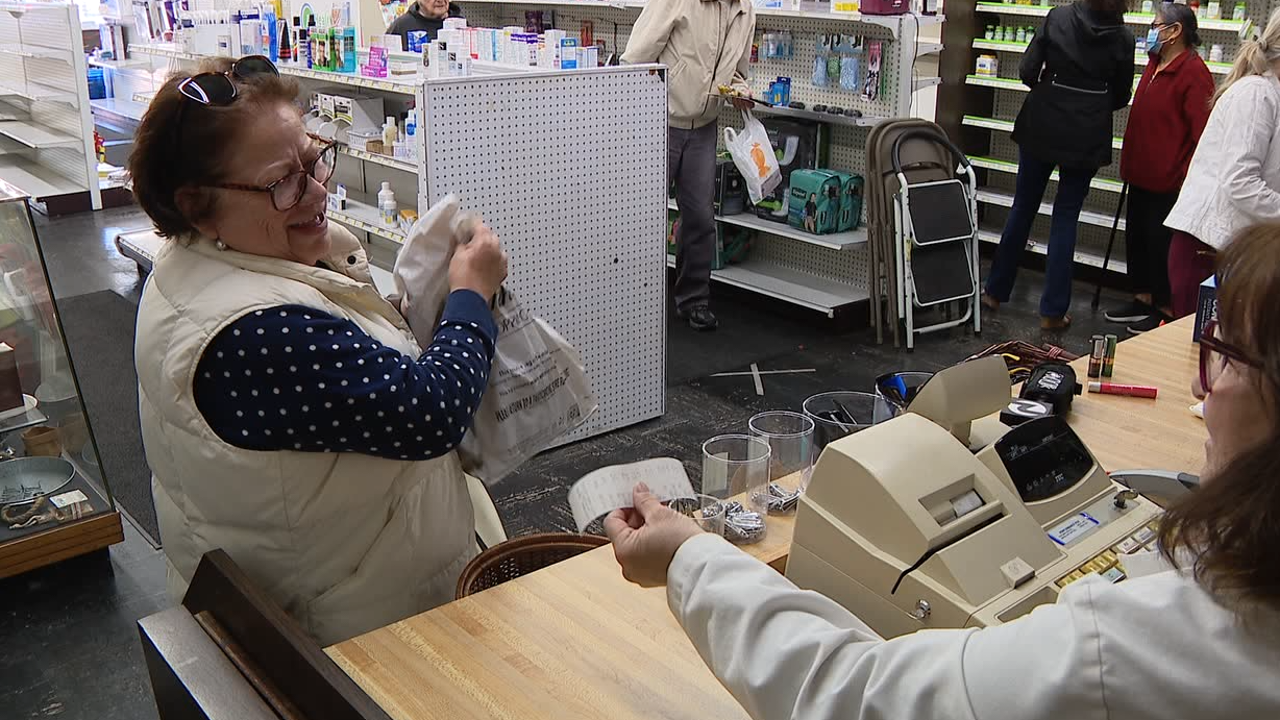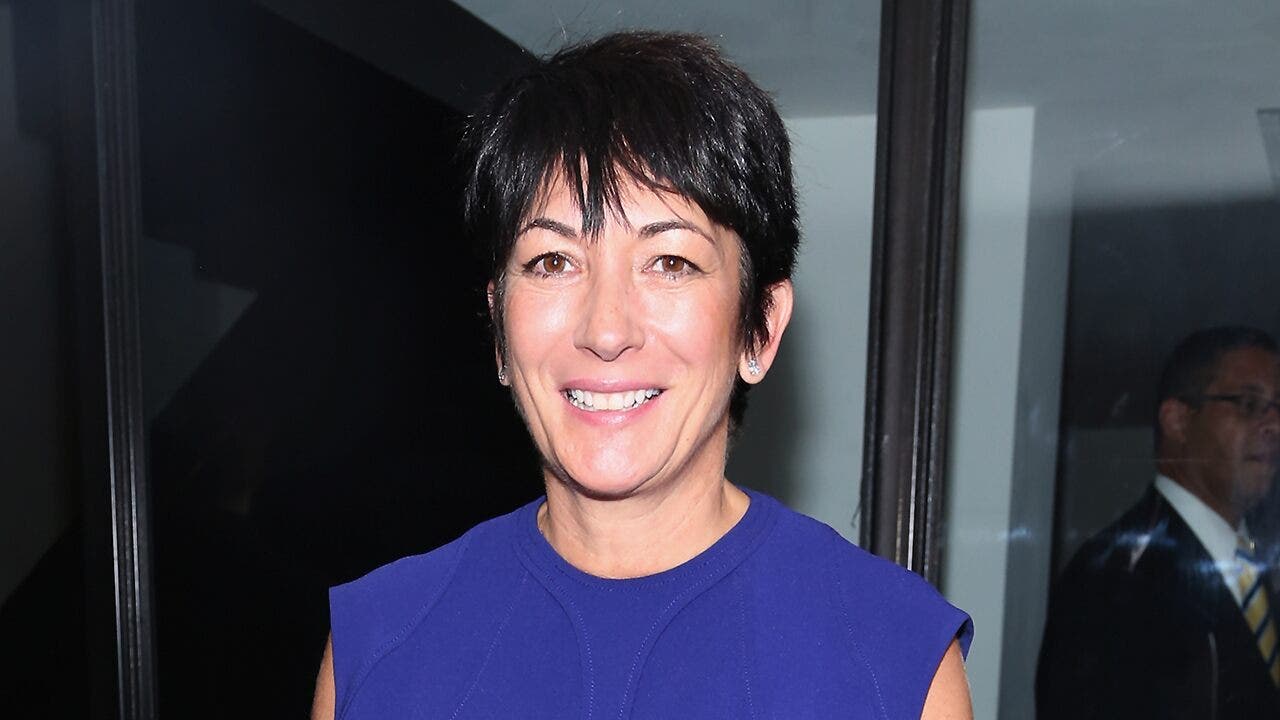Entertainment
'Just a regular guy': Gene Hackman enjoyed a quiet, simple life in Santa Fe, until tragedy struck last week

Out of the Hollywood spotlight, actor Gene Hackman painted, did Pilates and rode his bike in the Santa Fe, N.M., community where he and his wife, Betsy Arakawa, were woven into the fabric of the local community.
Friends said Hackman came to cherish the simpler life away from paparazzi and hype of the show business machine. In Santa Fe, he made friends, took part in community events and dined at the local eateries.
“He was a pretty low-key individual even though he was someone who had amazing stories to tell about Hollywood and other celebrities,” longtime friend Stuart Ashman said. “He was just a regular guy.”
But this peaceful anonymity did not follow the Oscar winner into death.
Last week, Hackman, 95, and his wife, Betsy Arakawa, 65, were found dead in their home, along with one of their three dogs. Investigators have ruled out carbon monoxide poisoning, but are awaiting toxicology results. They are working to rebuild a timeline of the couple’s final days through phone records, emails and other means.
The couple was described as private but neighborly by those who got to know them over the years.
Ashman was one of those people — befriending the two-time Oscar winner nearly 30 years ago after the two ended up sitting next to each other at a community arts meeting. Ashman was director of the New Mexico Museum of Arts at the time, while Hackman had a seat on the board of the Georgia O’Keeffe Museum, where he served from 1997 to 2004.
“He told me his name and I said, ‘Of course I know who you are,’” Ashman said. “He just smiled that big smile of his and our friendship went from there.”
For two years, Ashman was Hackman’s part-time egg supplier, gifting him the occasional dozen from the chickens he was raising. One day, Hackman returned the favor with a painted landscape of a tree-lined river. When Ashman initially declined to take it, Hackman politely insisted.
“Gene tells me, ‘You’ve been giving me eggs for two years. I think a painting is a fair trade,’” Ashman recalled.
The two would also chat it up between Pilates classes, where they shared the same personal instructor.
“She would say, ‘Gene, are you here to work or do you want to visit with Stuart?’” Ashman said laughing.
A landscape painting by Gene Hackman he gifted to his friend Stuart Ashman.
(Courtesy of Stuart Ashman)
Ashman said Hackman years ago discussed renting a home in the Florida Keys in the winter and possibly meeting up after their vacations, but then the pandemic happened, and the men drifted apart.
Longtime friend Doug Lanham didn’t think of Hackman as a movie star, but as one half of Gene and Betsy, the couple that was always helping in the community.
Their friendship also started out of happenstance. The couple went into his restaurant, Jinja Bar & Bistro, in the early 2000s, and ended up chatting with Lanham and the other owners, Lanham said. The topic of Arakawa’s cooking skills came up.
Lanham invited Arakawa to come by the next day, when the kitchen would be tasting some new recipes. Arakawa apparently had some ideas of her own.
“The next day, here comes Betsy just looking so wonderful and confident,” Lanham said. “And here comes Gene behind Betsy, lugging a cooler with all the food that Betsy was going to prepare for everyone to sample.”
Eventually, the couple put a financial stake in the restaurant. Over the years, Hackman contributed his artworks that now hang inside, including one large piece that occupies much of a 5-by-13-foot wall.
Initially, Hackman was intimidated at the scale of that piece, Lanham said.

Gene Hackman speaks at the grand opening ceremony of the Georgia O’Keeffe Museum in 1997 in Santa Fe.
(Georgia O’Keeffe Museum)
“You did all these movies that are great and we got this little wall that we want to just put a piece of art on. I never heard you say you can’t do anything,” Lanham said he teased Hackman over a few beers.
But three weeks later, Hackman called the restaurant owners up to his artist studio. There they found a bunch of tropical leaves hanging from wires on the ceiling that he used as models and on the back wall a large triptych painting of a woman looking out on a sunset in a South Pacific setting.
While Arakawa marveled at the piece once it was shown, Hackman was much more subdued, Lanham said. The reaction from customers was overall positive, but there were also critics.
“You see them crossing their arms and looking at the mural and going, ‘It’s kind of a [Paul] Gauguin, look at the color. And then I’d go, ‘Oh, this is a go-Gene. Look at this color,’” Lanham said.
The couple slowed down in the last few years, according to news reports.
Arakawa and Hackman’s friends Daniel and Barbara Lenihan, along with their son Aaron, told People magazine that Hackman was “essentially kind of home-bound” and had stopped riding his bike around his neighborhood. He had been showing his age in the last few months while his wife was “in perfect health,” the family told the magazine. She tried to keep him active and engaged, including doing puzzles and yoga over Zoom.
“They seemed like real life partners, really, really close to each other, and they were both incredibly kind,” Aaron Lenihan told People. “They were reserved, but they were real, [and] a lot of fun.”

Movie Reviews
Finally Dawn (2025) Movie Review: Fellinie-esque excess and coming-of-age meet the hollowness of Hollywood

You’ve seen this before. A young, unassuming person suddenly gets thrust into the Hollywood limelight as they realize the vanity and hollowness of all the glitter. Saverio Costanzo, who you may know from HBO’s beloved Italian drama “My Brilliant Friend,” is no stranger to the 1950s. “Finalmente l’alba (Finally Dawn)”, which is set in the same period and features an ensemble Hollywood cast, evokes a singular time in Italian movie history when Cinecitta (one of the prominent studios of the time) was known for hosting lavish, sword-and-sandals epics like Ben-Hur.
The young person in question here is Mimosa (Rebecca Antonaci), a doe-eyed movie lover whose love for the medium is quickly established as she, her mother, and a more conventionally attractive older sister Iris (Sofia Panizzi) come out of the latest War movie playing in their local theatre in Rome. As they exit the theatre, discussing the obsession of new-age directors with the futility of the war that they have just suffered, a crew member from Cinecitta spots Iris and invites her to audition for the latest epic about a female pharoah (a sort of Cleopatra parody on first look) played by Josephine (is played by Lily James in the movie). Now, Mimosa just tags along with her sister, but is quickly spotted by Josephine in a corridor and is offered one of the bigger roles in the film.
Now, “Finally Dawn” thereby turns into an endless loop of excess that the American actors and their consequent Italian hosts go on. Much like “La Dolce Vita,” the excess uncovers the hidden hollowness of the world of movie stars that Mimosa so dearly adores from a distance. We quietly follow her footsteps once the shot of the day is captured. However, the film’s more surreal edges keep pushing it further away from making a point.

James’ diva-like rendition of Josphine feels melodramatic to a point where you either feel nothing towards her, or you simply follow along. Her reasons for inviting Mimosa to tag along with them stem from some deep-seated insecurities and personal demons, but the film is never able to establish any of that. Making Josphie feel like a centre-piece that is given more attention than it rightfully needs, even in the movie-within-the-movie scenario.
I mean, it is quite right to establish Mimosa’s moral standpoint, who doesn’t accept being naked for her shot, but then the film also opens up the tragic death of Wilma Montesi — a real-life incident where an extra on a movie set was found dead on the beach; but never does anything about it except using it symbolically. Director Costanzo has said that he wanted to make the movie because of Wilma’s story, and while he is able to draw parallels through Mimosa’s coming-of-age, using Wilma’s story like that felt a bit exploitative to me.
The film also features an ensemble cast, including Joe Keery, Rachel Sennott, Alba Rohrwacher, and Willem Dafoe, but none of them feel like characters who bring something substantial to the table. It also doesn’t help that newcomer Rebecca Antonaci, who has a remarkable screen time, doesn’t evoke the kind of emotional connection the director is going for. Her character, although essential to the film’s proceedings, feels nudged down by the script’s many meandering tendencies.
Eventually, beyond the great production design that quietly brings back the 1950s and some smashing costume work, “Finally Dawn” is unable to elicit anything particularly interesting for the audience to pay heed to. The lion, for instance, is used as a broad metaphor, but much like its existence within the context of the film itself, the metaphor falls flat, and Mimosa’s story; instantly forgettable.
Read More: 20 Best Films from Italian Neorealism
Finally Dawn (2025) Movie Links: IMDb, Rotten Tomatoes, Letterboxd
Finally Dawn (2025) Movie Cast: Lily James, Rebecca Antonaci, Joe Keery, Rachel Sennott, Alba Rohrwacher, Willem Dafoe, Sofia Panizzi
Entertainment
Essay: ‘Love Island USA’ crowned its first Latino couple. Here's why that matters

We won! Or, at least those of us who were rooting for Amaya Espinal and Bryan Arenales to take home the prize on Season 7 of “Love Island USA.”
After a blockbuster season with its fair share of controversy, the 25-year-old nurse from New York City and the 28-year-old accountant, bartender and real estate agent from Boston, respectively, walked out of the villa $100,000 richer and became the first Latino couple to win “Love Island.” In a time when many Latinos in the U.S. are being inundated with threats to our safety and freedom, this example of a mutual, fun and respectful Latino love is an indulgent little triumph for us all.
The dating show became appointment viewing for millions of fans, including myself, with new episodes dropping almost nightly as the show airs in near real time. “Love Island” — which launched in the U.K. in 2015 and has since spawned several international versions — confines single hotties in a Fijian villa, where they must explore romantic connections and couple up with each other to remain on the show. Viewers and cast members known as “islanders” vote regularly to decide which contestants or couples must pack up their swimsuits and go home. As with most reality TV, there’s messiness, drama, silliness and sexiness that keeps viewers glued to their screens, and we clock in for our shift at the island mines with dedication.
Espinal, a self-described “Dominican Cinderella,” entered the villa as a “bombshell,” a cast addition meant to stir things up for the original couples. Meanwhile, her Prince Charming, Arenales, who is Puerto Rican and Guatemalan, came in during the Casa Amor segment of the show, when islanders are separated by gender and introduced to hot new cast members vying for their attention.
The two coupled up several episodes after meeting in Casa Amor, igniting a romance in large part over a shared understanding of their cultures. Being super hot probably didn’t hurt either, but it was seeing Arenales stand up for our sweet Amaya Papaya against a pile-on from his fellow male islanders that sealed the deal — not just for Espinal, but for the viewers, in particular Latinx ones.
Espinal’s rough start on the series reflected the cultural valleys that exist between Latinos and their non-Latino counterparts in the United States, which can generally make for a tricky dating experience. Three of the male contestants she coupled up with expressed discomfort with her personality and bold manner of expressing herself. It started with a blowup with contestant Ace Greene after he vocalized his discomfort with Espinal touching him and using terms of endearment, in particular the word “babe.”
The same issue came up when she coupled up with Austin Shepard and Zak Srakaew, who took issue with Espinal “moving too fast” by acting overly romantic (on a show called “Love Island,” mind you). This was despite her explaining that in Dominican culture terms like “mi vida,” “mi amor” and “babe” are common terms of endearment, and asking if it was OK that she use them. (Both agreed it was fine.)
Espinal certainly lost her cool — in most cases, I would argue, rightfully so — and regularly became emotional, struggling with feeling misunderstood and attacked. Still, she defended herself with confidence and strength from those who seemed intent on painting her as erratic, intense, pushy and aggressive. During a game in which islanders wrote letters to air out any grievances, she offered them a simple option: “I’m just not your cup of tea to be drinkin’, so don’t f—ing drink it.”
It was during that game in which Greene, Shepard and Srakaew went in on Espinal that Arenales stepped in to defend her, explaining what Espinal had long been saying: Those terms of endearment are common in Latino households. “You’re telling her to meet you halfway,” he said. “You gotta meet her halfway too.”
Arenales gallantly stepping up to support Espinal against a social firing squad sparked a flame between the two. Fan votes showed this moment to be a turning point for Espinal, who became a favorite. It doesn’t hurt that her nurturing personality and adorable zaniness make her very easy to root for.
Seeing Arenales voice his appreciation for who she is and understanding her background — and Espinal herself refusing to change parts of her personality that she views as the strengths of an “emotional gangsta” — made their coupling a powerful display of Latino love. Those two crazy kids just get each other!
“This is just a message to everyone out there who’s misunderstood: Nobody should be tamed and there’s always someone out there for you who’s going to love you for you and appreciate all your craziness,” Espinal told host Ariana Madix after their win was announced. “Don’t ever settle for nobody.”
This was an especially lovely and important win after this season was marred by a racism scandal in which two Latina islanders were found to have used racial slurs online and in a podcast.
As much as Espinal may have felt misunderstood, Espinal is not a difficult person. There’s no need to decipher her because it’s not that complicated, regardless of her cultural identity. From everything I saw on the show, she showed a tremendous amount of character and kindness. She just didn’t put up with B.S. from guys who were trying to diminish her, call her irrational and insinuate she was clingy. Amaya Papaya always stood on business.
I love that Espinal found someone who sees and appreciates her in Arenales. And judging by their win, she found that in innumerable people who voted for them as well. But there’s nothing anyone should struggle to understand about her.
Yes, parts of her behavior are informed by her culture — but yelling at a man who is trying to make you seem crazy is a universal experience we should all partake in.
Movie Reviews
‘The Scout’ Review: Modest but Accomplished Debut Brings a New York Location Scout’s Routines to Lovely, Low-Key Life

On paper, Sofia (Mimi Davila), the protagonist of Paula Andrea González-Nasser’s mellow debut The Scout, has an enviable job. She spends her days driving through New York, taking photos of building exteriors, cozy apartments and eclectic shops in service of her director’s vision. Sofia is a location scout, an occupation that conjures romantic images of one’s relationship to space.
The truth is that Sofia’s job can be taxing, and in The Scout, which premiered in June at the Tribeca Film Festival, González-Nasser, who was herself a location scout for six years, crafts a modest portrait of its complicated reality. The director reveals how location scouting involves an emotional deftness, a stultifying deference to a director’s vision and lots of patience. Sofia deploys these tools to broker deals between her team and the people from whom they want things. She must act with the urgency demanded by her bosses and be sensitive to the fact that these locations are homes to real people whose memories live in the furniture and on the walls. Often subsumed by other people’s needs and narratives, Sofia struggles to not become a background character in her own story.
The Scout
The Bottom Line
A discreet and confident debut.
Venue: Tribeca Film Festival (U.S. Narrative Competition)
Cast: Mimi Davila, Rutanya Alda, Max Rosen, Ikechukwu Ufomadu, Sarah Herrman
Director-screenwriter: Paula González-Nasser
1 hour 29 minutes
Working from a screenplay she wrote, Gonzàlez-Nasser structures The Scout around discrete interactions Sofia has throughout the day. The film confidently highlights the delicate relationship between people and their spaces, while also acknowledging the understated harshness of a job that requires you to assess, with a certain degree of remove, one of the more intimate elements of another person’s life. Parts of The Scout, in its contemplative tone and observational style, reminded me of Perfect Days. Like Wim Wenders’ poignant study of a middle-aged janitor’s routines in Tokyo, The Scout could find success in arthouse theaters and on the festival circuit.
When we meet Sofia, she is asleep in her own space — a compact, well-lit apartment somewhere in New York. The room resembles the dwellings of so many young people living in the expensive and bustling city. There’s the starkness of the walls, painted an impersonal white, and the minor touches — a standing fan, a gold framed mirror, a small drawing affixed to the wall — that suggest signs of a real life. Following this moment, the young location scout will almost exclusively occupy the shops and homes of other people.
Each space offers an opportunity for Sofia to remake herself. The transformations are subtle; the location scout tweaks her personality just enough to connect with the person living in the space so that they might be more amenable to letting a random crew of people take it over. Sometimes, as with an older woman (Rutanya Alda) who tells Sofia about her son who moved to London and rarely visits, the interactions are sweet and revelatory. It’s clear that Sofia’s presence — her kind eyes and encouraging responses — doubles as an invitation for lonelier people to share parts of their life with her. Other times, as with the pet shop owner (Matt Barats) who asks her to dinner or a father (Max Rosen) who follows her around the house with an air of menace, the encounters are fraught and a touch scary. Yet rarely does Sofia lose her cool.
The young woman, played with a quiet conviction by Davila (Problemista), navigates each situation with an understanding that her role in these people’s lives is merely temporary. Her approach differs from that of her colleagues, who barge into these homes with no consideration and much fanfare. They appraise each space with a callous indifference toward who lives there, commenting on ugly doors and unimpressive heirlooms.
Other elements of The Scout reinforce our sense of this transient atmosphere. Cinematographer Nicola Newton shoots each location — whether its Sofia’s room or a brownstone in Brooklyn — with the kind of attention reserved for places you know you’ll never return to. A spare score (composed by Dan Arnés) and the familiar melodies of a cityscape (birds chirping, engines running) soundtrack Sofia’s experiences.
Despite their meditative loveliness, low-key projects like The Scout can leave something to be desired in terms of narrative. The lure of a story built on vignettes can shortchange its principal characters and the constellation of supporting ones. As Sofia floats from one home to the next, I wondered about the texture of her life. Gonzàlez-Nasser offers some clues through an interaction between Sofia and her old friend Becca (Otmara Morrero), whose gorgeous apartment has been unexpectedly included on the list of the scout’s locations. Their reunion is brief but laden with the weight of history. Conversations about mutual friends and retired dreams are revealing of Sofia’s aspirations; Becca remarks on how Sofia always wanted to be behind the camera and how she, in a way, is a photographer now. The scout doesn’t completely agree and the ensuing silence suggests a history of compromise.
It also exposes a pattern in Sofia’s earlier interactions, underscoring how much the scout almost disappears into each story. When she finally has a moment of self-assertion, in a quiet moment on the beach, it’s a triumph I wish had come sooner.
-

 Culture1 week ago
Culture1 week agoTry to Match These Snarky Quotations to Their Novels and Stories
-

 News6 days ago
News6 days agoVideo: Trump Compliments President of Liberia on His ‘Beautiful English’
-

 News1 week ago
News1 week agoTexas Flooding Map: See How the Floodwaters Rose Along the Guadalupe River
-
Business1 week ago
Companies keep slashing jobs. How worried should workers be about AI replacing them?
-
Finance1 week ago
Do you really save money on Prime Day?
-

 Technology1 week ago
Technology1 week agoApple’s latest AirPods are already on sale for $99 before Prime Day
-

 News5 days ago
News5 days agoVideo: Clashes After Immigration Raid at California Cannabis Farm
-

 Politics1 week ago
Politics1 week agoJournalist who refused to duck during Trump assassination attempt reflects on Butler rally in new book
















